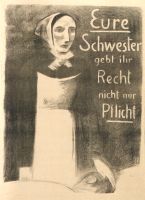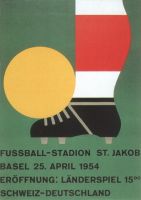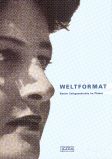 1920, A.H. Pellegrini
1920, A.H. Pellegrini
"Your Sister, give her rights, not only duties", poster for voting rights for women
One male chauvinist who could not appreciate the beauty of this design commented in a letter to the editor of the local daily
" .. if that ghostly sister is supposed to be the midwife of a new political order
then I am not afraid of the outcome of the vote" and "stop insulting the nursing profession". The vote went his way, in 1920.
|
 1959, Werner Naenny
1959, Werner Naenny
Poster against the vote for women, published by the Basel Women's Commitee Against the Vote
Irmgard Rimondini, an 85 year old firebrand and once a leading figure in the fight for the vote,
told me that she found the selection of the posters in the exhibition a bit too tame, and prefered the
really mean and derisive pictures, even if they were from the other camp. "Then, at least we have something to laugh about." She won, in 1959.
|
 1937, Ferdinand Schott
1937, Ferdinand Schott
Where should we build the playground?
The Liberal Party suggested in this poster that costs could be halfed by moving the
site by 250 m, to which the Communists replied that "..the capitalist reactionaries have to
be dealt a severe blow on voting day .."
|
 1927, Niklaus Stoecklin
1927, Niklaus Stoecklin
The poster, one of the highlights of the book, and of Stoecklin's oeuvre, refers to
the little black Gaba cough drops that everybody knew by their peculiar shape.
The poster just had to remind you to take them.
|
 1954, Herbert Leupin
1954, Herbert Leupin
A soccer game at a newly opened stadium in 1954. The home team played with Stuber,
Bocquet, Feselet, Kernen, Eggimann, Antenen, Casali, Meier, Vonlanthen, Ballamann and Fatton
and lost 3:5 to the german visitors. Please consult the book for the names and origins of the
german players, if the need should arise.
|

 1920, A.H. Pellegrini
1920, A.H. Pellegrini
 1959, Werner Naenny
1959, Werner Naenny
 1937, Ferdinand Schott
1937, Ferdinand Schott
 1927, Niklaus Stoecklin
1927, Niklaus Stoecklin
 1954, Herbert Leupin
1954, Herbert Leupin